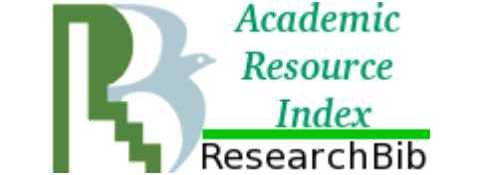Revealing RELATIONSHIPS OF REGIONAL DEVELOPMENT FACTORS BY THE METHOD OF CORRELATION ANALYSIS
Abstract
The purpose of this study is to identify the interrelationships of the main factors inherent in the regional economic system. The study was conducted using the method of correlation analysis. The scientific novelty lies in the development of conclusions on the interdependence of key indicators of regional development based on the statistical data of the subjects, taking into account the data of Rosstat, the Ministry of Finance of Russia and the Central Bank. The levels of relationships between the indicators were identified and statistically evaluated, which allowed us to conclude about the inherent "path dependence" of a number of factors. The calculation of indicators and visualization of results are prepared using data analysis algorithms in the programming language R. Conclusions are drawn about the high mutual conditionality of investments and accumulated fixed assets in the region, the credit load and the volume of deposits, investments and own budget revenues, etc. The results obtained can be used in the development of regional economic policy measures.
Keywords: economic indicators of the region, "black box" model of the region, correlation analysis, investments, key factors of the regional economy
Introduction
The need to rethink several basic prerequisites of conceptual understanding of regional development, as well as to update the understanding of the essence of the implementation of regional policy of economic development management, is now becoming apparent, Identification of key factors and indicators to assess the effectiveness of its implementation.
In modern futurological concepts of development of economic systems there is a transition from the concept of VUCA (Volatility, Uncertainty, Complexity, Ambiguity) [Pearse N. J., 2014] to the approach of BANI (Brittle, Anxious, Nonlinear, Incomprehensible) [Godoy M. F., Ribas F. 2021].
Thus, fundamentally new requirements are imposed on the efficiency of decision-making at the regional level in order to respond to ongoing events and the need to maintain the stability of the socio-economic system at the regional level.
Due to the high volatility of the ongoing processes associated with the Covid-19 pandemic, as well as the special military operation, there are failures in logistics processes, established business practices, restrictions in the organization of production processes, etc.
Considering the identified challenges, the purpose of this article is to analyze the indicators of development of regional economies for 2020-2021 in order to draw conclusions on their sustainability, interrelationship and the possibility of evaluating the results of the work of regional authorities and in general top officials of the constituent entities of the Russian Federation on the basis of these indicators.
For the purposes of this article, it seems appropriate to introduce a definition of regional economic policy.
Based on the results of the analysis of scientific publications, the author proposes to use the following definition, taken on the basis of the definition of the economic policy of the state [Tsvetkov V.A., Sukharev O.S., 2017]. Regional economic policy is essentially the general line of action of regional authorities regarding the system of economic management measures that give direction to socio-economic processes in accordance with the goals, objectives and interests of the country / region and / or individual groups occupying a high position in the hierarchical levels of management (or social hierarchy).
Economic development implies a change in individual elements of the system, but since the elements of the system are interconnected, the development process leads to changes in the structure of the system, the weight of individual areas and the formation of new dominant factors and their dynamics. However, in general, socio-economic systems demonstrate stability, as well as their own evolution, provided by independent actors (organizations in the economic sphere). An example of such changes is the decisions of companies to upgrade equipment, expand production, overhaul, and others. As a rule, regional authorities have the most remote relation to such decisions; they are made by the company's management in accordance with market conditions that ensure demand for products.
The article presents the results of research conducted using the method of correlation and regression analysis, on the data of Rosstat, the Ministry of Finance of Russia, the Central Bank for the subjects of the Russian Federation, Data analysis was carried out using tools and algorithms of the statistical environment in the programming language R.
Main part
Model and indicators of the regional economy. There are many regional economic models, with identified key growth factors and the conditions for its functioning
[North D.C., 1990; Isaev A.G, 2022].
The main issues in using regional development models are related to the fact that they use different sets of determinants and indicators, while, in our opinion, causal relationships and the level of mutual conditioning of factors have not been sufficiently studied.
At the same time, any model tends to generalize regional examples to derive a universal mathematically elegant formula for economic growth. But in our opinion, if there are statistical data from different sources, it is advisable to operate with actual indicators and draw conclusions based on the results of calculations.
From the author’s point of view, it seems appropriate to consider the regional economy from the point of view of the processing system of incoming and outgoing resources, as well as the financial factors involved in the system.
In order to analyze the regional economic system and select indicators for analysis, Figure 1 shows the formed model, which the author developed on the basis of the “black box” model.
Considering the functioning of regional economies for a certain period, it is necessary to allocate key factors at the «input» of the production system (1st block) - the volume of accumulated fixed assets in the economy and the volume of labour resources. Taking into account that the structure of the economies of Russian regions differs significantly in the composition of industries, and industries differ in terms of the required capital-labor ratio and labor intensity depending on the products produced, in our opinion, in general, these factors are universal for assessing the initial conditions for development. At the same time, assessment of the effectiveness of economic policy implementation in relation to different sectors of the regional economy will be the subject of our further applied research.
The second block includes the financial factors of the functioning of the regional economic system. These are indicators characterizing the sources of financing and indirect indicators of the results of the production sector of the economy in the form of investments at the input and tax revenues to regional budgets at the output the financial dimension. It is important that these indicators of the credit burden and revenues of regional budgets are not included in the Rosstat database, the sources of data are the Ministry of Finance of Russia and the Central Bank, and for their use in calculations it is necessary to ensure the merging of databases, in this regard, most applied research is based solely on indicators of Rosstat and the indicators proposed by the author are not used.
In the third block of indicators, at the “output” of the regional economic system, it is proposed to use the volumes of shipped products and the amount of funds in bank accounts. In terms of the volume of shipped products, the indicator is an analogue of GRP, however, the efficiency of its calculation by Rosstat is much higher, and to increase the relevance of calculations, it is proposed to use it instead of the GRP indicator calculated with a lag of 2 years. In terms of the amount of funds in the accounts, many researchers suggest using indicators of the financial performance of organizations in the region, and this seems to be theoretically justified. However, in practice, taking into account the formats for collecting these data by Rosstat, as well as the desire of organizations to minimize financial indicators for profit in order to optimize tax payments, it seems that in practice these data are significantly distorted, and it is not advisable to use them in applied research. At the same time, the data of the central bank on the volume of deposits in the accounts, in our opinion, reflect the financial performance of organizations in the region much more accurately.
Based on the results of the system analysis, it is necessary to identify significant elements of the system, to form indicators on the basis of which it is possible to assess the functioning of the system, as well as to establish the relationship between the indicators and, consequently, elements, to further identify the factors that determine the dynamics of the system and the interrelationships that ensure the inertia of the movement of the system. This is essential when separating the results of economic policy implemented by regional authorities and the inertia of the socio-economic system.
Another task of applied research is to identify inertial trends in the development of the system, to identify the tools of regional authorities and priority segments of the economy for which measures are being developed in the paradigms of regional economic policy “development”, “sustainability” and “security” (“anti-crisis”). [Dmitrieva L. V., 2022].
Based on the presented model in Figure 1, datasets were formed that characterize the selected factors.
Таблица 1
Индикаторы модели, показатели и источники данных
Table 1
Model indicators and data sources
Indicator | Factor |
|---|---|
Х2 | Cost of fixed assets by type of economic activity at the end of 2020 (at full accounting cost; mln rubles) [Regions of Russia, 2021] |
Х13 | Budget revenues for 2020, total, thous. rubles [Data on the execution of consolidated, 2020] |
Х14 | Tax and non-tax budget revenues for 2020, thous. rubles [Data on the execution of consolidated, 2020] |
X49 | Investment in fixed assets (by full range of economic entities) from all sources of financing; mln rubles (hereinafter referred to as Investment) for 2018 [Information for monitoring, 2022] |
X50 | Investment for 2019 [Information for monitoring, 2022] |
X51 | Investment for 2020 [Information for monitoring, 2022] |
X52 | Investment for 2021 [Information for monitoring, 2022] |
Х61 | Population by regions of the Russian Federation, total population, thous. people at the beginning of the year, excluding the results of the 2020 All-Russian Population Census conducted in October–November 2021 [Regions of Russia, 2021] |
Х68 | Shipped goods of own production, performed works and services in-house (excluding VAT, excise duties and similar mandatory payments) mln rubles in 2020 [Information for monitoring, 2022] |
X69 | Shipped goods of own production, performed works and services in-house (excluding VAT, excise duties and similar mandatory payments) mln rubles in 2021 [Information for monitoring, 2022] |
X70 | Funds of organizations, bank deposits and other attracted funds of legal entities, individuals and individual entrepreneurs in rubles, foreign currency, and precious metals as of 01/01/2022, mln rubles [Statistical Bulletin of the Bank of Russia, 2022] |
X74 | Debt on loans owed to resident legal entities and individual entrepreneurs in rubles, by type of economic activity and certain areas of use of funds as of January 1, 2022, mln rubles [Statistical Bulletin of the Bank of Russia] |
Results of the analysis of indicators of the regional economy. Based on the generated dataset for the constituent entities of the Russian Federation, we will form a correlation matrix between factors for 85 regions. The calculation and visualization of these values was carried out using programming tools in the R language.
For all indicators, there is a positive correlation at a high and very high level. We will form a hypothesis that this is due to factors of the scale of the region, and to level this influence, we will recalculate the dataset indicators into per capita indicators.
The following figure shows the correlation matrix of the selected factors recalculated per capita (the prefix "nd" to the names of the factors), while the population factor itself also remained in the correlation matrix.
While the first correlation matrix presents the nominal value of key economic indicators, and the graph shows very high correlation coefficients (all values above 0.7), the picture has changed significantly in the second matrix.
By testing the hypothesis that high correlation factors are due to population dependence, the factor correlation matrix reflects little or no correlation between a number of indicators.
As a result of a detailed correlation analysis, the following conclusions were drawn:
- There are high rates of correlation of the population with indicators of loan debts (0.46) per capita and funds of organizations and legal entities on deposits and accounts (0.66) per capita. This may indicate a more developed financial infrastructure in large settlements, as well as agglomeration effects.
- The cost of fixed assets by types of economic activity (in fact, the volume of accumulated assets) determine the amount of investment in fixed capital, both in previous and subsequent years. The correlation coefficient is 0.95 and higher. At the same time, the values of indicators of the size of investments in fixed capital per capita vary significantly from region to region.
Таблица 2
Описательная статистика показателя объема инвестиций в основной капитал на душу населения по регионам России
Table 2
Descriptive statistics of the indicator of investment in fixed capital per capita by regions
of Russia
Minimum value |
|
| Maximum value | ||
39.48 (The Republic of Ingushetia) |
|
- The cost of fixed assets by type of economic activity in the region also determines the volume of shipped products, the correlation level is 0.95 and higher.
- The debt on loans owed to legal entities has a fairly high correlation (0.73) with the funds of organizations, individual entrepreneurs and individuals placed in banks. In this case, the deposit was taken into account by individuals, as these resources are largely related to business investment opportunities. However, these data indicate that it is possible to form a hypothesis that the high level of deposits in accounts is due largely to the availability of credit, and since 2021 has been adopted. It is necessary to consider the lengthening of capital turnover due to logistical failures and limitations of organizations related to the prevention of the consequences of the Covid-19 pandemic.
- A sufficiently high correlation between debt owed to legal entities and fixed investment (0.65), indicating the main sources of investment in the form of loans, and a high correlation (0.61) with fixed assets by type of economic activity at the end of 2020.
- The indicator of the volume of investments per capita has practically no correlation with the population of the region. This means that agglomeration effects do not influence the specific volume of investments in terms of per capita.
- Indicators of investment in fixed capital have a very high positive correlation with similar values of the indicator for 4 years (2018–2021) with a correlation level of more than 0.95. In this case, this indicates a stable “path-dependence problem” in terms of the level of investment achieved.
- The analysis shows very high correlations between the volume of investment in fixed capital and the volume of output shipped. The correlation coefficient is above 0.94, which in our opinion also indicates the “path-dependence problem” which determines the values of the indicators.
- A high positive correlation between the volume of investment in fixed assets and the own budget income (the correlation coefficient from 0.71 to 0.83) is indicative, but if we take the total income of the regional budget, i.e. including inter-budget transfers from the federal budget, the correlation rate is significantly lower (within the range of 0.54-0.68). This shows that federal grants do not depend on or depend on the level of investment attracted to the region.
- The volume of goods shipped also has a high positive relationship with its own budget revenues (correlation coefficient from 0.77 to 0.84), but this conclusion is logically based on the current tax system, when objects of taxation are results of activity of organizations.
- Considering the indicator of the volume of funds in bank accounts per capita, a high indicator of positive correlation with the population (0.66) is interesting. Here, in our opinion, agglomeration effects are manifested, associated with the development of the financial environment in larger settlements.
- The indicator of the volume of funds in bank accounts per capita also has a high positive correlation with debt on loans provided to legal entities and individual entrepreneurs (0.73). This conclusion about the relationship of indicators indicates that in more financially secure regions, in terms of the accumulated resources of the population and organizations in banking organizations, there is also a higher credit burden. The reasons for these relationships need further analysis.
Conclusion
Based on the results of the analysis of indicators on the basis of the model of the regional economy formed by the author for the purpose of forming and evaluating the results of the implementation of regional economic policy, it is possible to draw systemic conclusions.
The regional socio-economic development of the current period is largely dominated by the prevailing sectoral conditions and the level of economic development, which determine in many ways the scenarios of further inertial development.
A similar development scenario, presented in economic theory as “Path Dependence”, which is dependence on previous development [David P. A., 2000], has recently been designated for the Russian Federation as a “path-dependence problem”, and with far from the best consequences for development prospects. In the regions, the effect of the “path-dependence problem” is especially noticeable. In particular, the indicator of the volume of investment in fixed capital is due to the accumulated volume of fixed assets in the economy. In such cases, we can talk about the effect of “regional” or “local path-dependence problem” [Gordeev S.S., Zyrjanov S.G., Podoprigora A.V. 2019]. It is important that the possibilities for the region's economy to move away from the trajectory of the previous development in the conditions of crisis processes and instability can change significantly, and this provides the authorities with special opportunities to bring the region to a different development trajectory.
As part of the analysis of complex regional socio-economic processes, the problems of correctness and reliability of estimates are of particular importance. Systematic errors associated with the deformation of the reflection of the real situation in certain indicators of statistical reporting cause distortions in socio-economic modeling. It is important to use reporting data for the regions of federal authorities for analysis, however, in this case, it becomes difficult to combine reporting from different sources for analysis.
The analysis carried out showed great opportunities for further analytical studies of the interrelationships of regional indicators, identifying trends in the “path-dependence problem” of regional economies, as well as the experience of transition to a new development trajectory, which will be the subject of the author's further work.

















Reference lists
Kolomak, E. A. (ed.), IJeI DVO RAN, Khabarovsk, (in Russian)